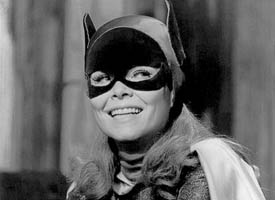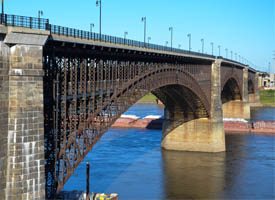- Details
 The man responsible for many of our nightmares, Wes Craven, earned a degree in English and psychology from Wheaton College in Illinois. He then went on to obtain a master’s degree and pursue a career in the film industry.
The man responsible for many of our nightmares, Wes Craven, earned a degree in English and psychology from Wheaton College in Illinois. He then went on to obtain a master’s degree and pursue a career in the film industry.
Craven created the iconic Freddy Kruger character that terrified viewers for years.
Known for the “Nightmare on Elm Street” and “Scream” franchises, Craven went on to win a number of awards throughout his career.
Learn more:
Official Wes Craven website
- Details
 On Sunday April 15, 1956, WMAQ-TV became the first television station to broadcast exclusively in color.
On Sunday April 15, 1956, WMAQ-TV became the first television station to broadcast exclusively in color.
At 4:15 p.m., Channel 5 became the world's first all-color TV station after then-President Robert W. Smarnoff pressed a button switching from black and white.
The transformation to all-color cost NBC more than $1.25 million, with an advertising budget of $175,000.
Learn more:
Check out the official NBC website
This site has even more details about the conversion project!
- Details
 Yvonne Craig, who played Batgirl in the 1960s Batman TV series, was born in Taylorville in 1937. Craig joined the Ballet Russe de Monte Carlo as its youngest ballet member in the 1950s. She moved to Los Angeles in 1957 in hopes of continuing her ballet career but instead began a long and successful career in film and television.
Yvonne Craig, who played Batgirl in the 1960s Batman TV series, was born in Taylorville in 1937. Craig joined the Ballet Russe de Monte Carlo as its youngest ballet member in the 1950s. She moved to Los Angeles in 1957 in hopes of continuing her ballet career but instead began a long and successful career in film and television.
One of Craig’s first television roles came in 1958, playing a lead character in the series Perry Mason. Craig would go on to star in High Time (1960) and with Elvis Presley in It Happened at the World’s Fair (1963) and Kissin’ Cousins (1964). Craig began her role as Batgirl in 1967 after the character was introduced in comic books in 1961.
Learn more:
Read more about the life of actress Yvonne Craig
- Details
 Born in Chicago on September 5, 1940 to a Bolivian father and English mother, Raquel Welch has appeared in nearly 40 movies and countless television shows and productions. She landed her first big role in the film “A Swingin’ Summer” in 1965, followed shortly thereafter with “One Million Years B.C.,” a film that solidified her status as a beauty icon.
Born in Chicago on September 5, 1940 to a Bolivian father and English mother, Raquel Welch has appeared in nearly 40 movies and countless television shows and productions. She landed her first big role in the film “A Swingin’ Summer” in 1965, followed shortly thereafter with “One Million Years B.C.,” a film that solidified her status as a beauty icon.
Welch received a Golden Globe Award for her role in “The Three Musketeers” and received a star on the Hollywood Walk of Fame in 1994.
Learn more:
Read more about the life and accomplishments of Raquel Welch
- Details
 Construction of the Eads Bridge, connecting Illinois and Missouri in East St. Louis, began on this day in 1867.
Construction of the Eads Bridge, connecting Illinois and Missouri in East St. Louis, began on this day in 1867.
The Eads Bridge was the first bridge made of cast steel and, at the time, was the longest arch bridge in the world. With the help of underwater work stations, bridge designers were able to sink piers well into the gravel bedrock more than 100 feet underwater – an engineering feet unheard of at the time. After more than seven years of construction, the Eads Bridge opened in June of 1873 at a final cost of $7 million.
Today, the Eads Bridge carries more than 8,000 vehicles everyday on its upper deck. Rail lines on the lower deck carry MetroLink trains connecting the East St. Louis riverfront with downtown St. Louis.
Learn more:
Read more about the Eads Bridge designer James Buchanan Eads
More Articles …
- Did You Know? Illinois was home to the first town founded by an African-American
- Did You Know? It’s the birthday of Chicago’s Picasso sculpture
- Did You Know? Illinois was one of the first states to ratify the 19th Amendment
- Did You Know? The Illinois State Fair runs until Sunday
- Did You Know? Julius Rosenwald helped expand Sears into a nationwide enterprise





